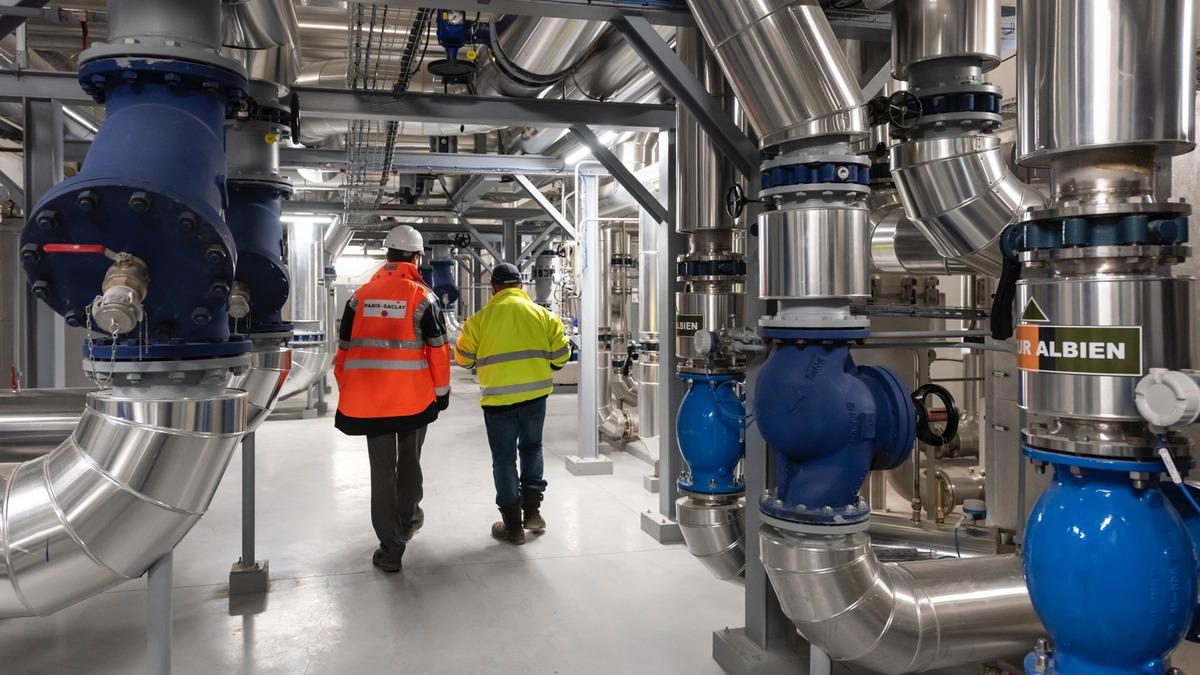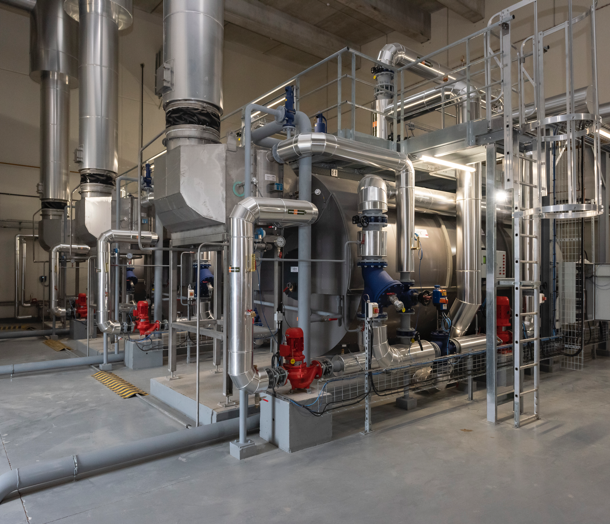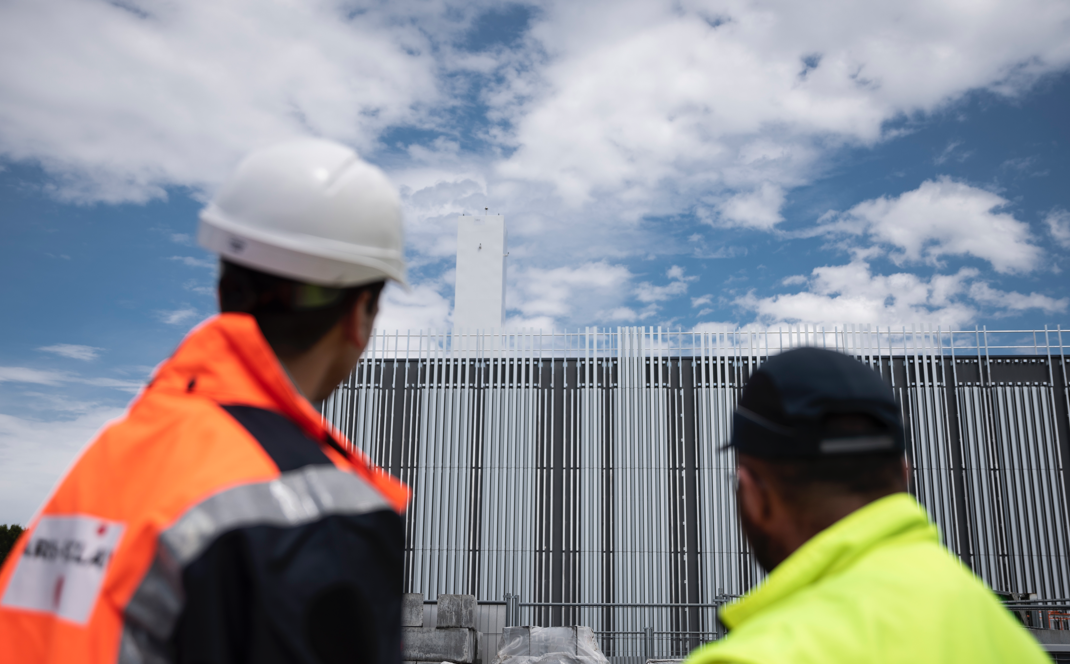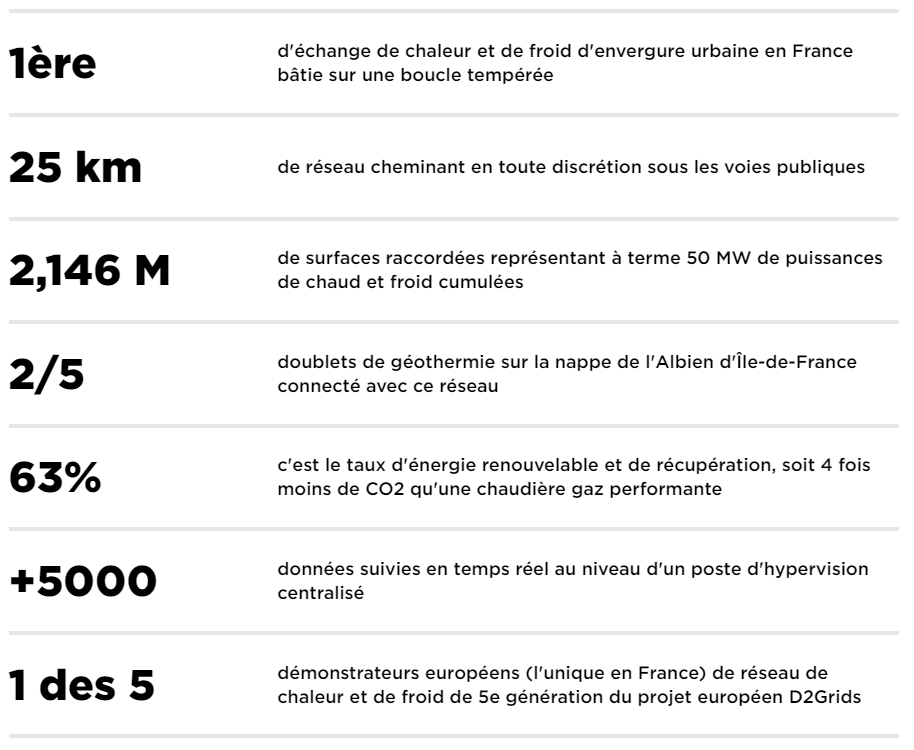The Paris-Saclay heat and cold exchange network: an innovative model for the energy transition
D2Grids Project

The Paris-Saclay heat and cold exchange network has been designated as a demonstrator as part of the European D2Grids project. The latter aims to encourage the development of 5th generation heating networks. Demonstrators of thermal systems and advanced demand management will be tested on the Paris-Saclay network to optimize its production and the energy consumption of buildings.
Based on an IoT (Internet of Things) infrastructure deployed in parallel with energy networks that will collect all data, these systems will use artificial intelligence to learn about the energy behaviour of buildings and their users. In the short term, they will therefore make it possible to increase the share of renewable energy used while strengthening interactions with the smart grid electricity on the urban campus. Inaugurated on Monday 24 June 2019, and a world first on this scale, the implementation of this new energy model is part of the sustainable development strategy of the Paris-Saclay Public Development Agency (EPA). It is also involved in the construction of an innovative eco-territory, where the development of local and renewable energies is supported by an intelligent management system with many advantages.
1/ A heat and cold exchange network using deep geothermal energy
The development of the Paris-Saclay urban campus is an opportunity to implement the new governance recommended by the law on energy transition for green growth while meeting the objectives set by COP21. This ambition is reflected locally in the adoption of a low-energy, low-carbon model that involves working together on the performance of new buildings, the renovation of existing facilities and the in situ production of renewable energy. The creation of a heat and cold exchange network is part of this dynamic. It is based on the use of a clean, competitive and available source of energy in the Île-de-France region: geothermal energy.
Geothermal energy, a clean and competitive energy
Designed around the largest temperate distribution loop in France, the Paris-Saclay heat and cold exchange network is supplied by the Albian groundwater table, i.e. 700 billion cubic metres of water at an average temperature of 30°C. To develop this energy present in part of the Paris basin, boreholes were drilled 700 metres below the surface in the Zone d'Aménagement Concerté (ZAC) [1], of the École Polytechnique and Moulon districts in partnership with the Syndicat des Eaux d'Île-de-France. These geothermal wells are used both to pump water and, after extracting energy, to inject it back into the Albian. Connected to the grid, they will eventually provide renewable energy to all buildings on the Paris-Saclay campus.
2/ Intelligent energy management to ensure the environmental performance of the network
The operation of the heat and cold exchange network
The EPA Paris-Saclay has set the objective of using more than 60% renewable energy on the urban campus, which is four times less CO2-emitting than a traditional solution. As an urban energy exchange infrastructure, the Paris-Saclay network thus allows the buildings connected to it to become producers or consumers of heat and cold in turn. The choice of this solution was validated upstream by technical studies led by EPA Paris-Saclay. It was then confirmed by the General Secretariat for Investment, which, in February 2015, acknowledged the environmental and economic relevance of this equipment in terms of uncoordinated autonomous infrastructures or conventional networks.

A shared energy management system
In order to optimize energy distribution according to the needs and uses of each building, the Paris-Saclay heating and cooling network is based on a digital infrastructure capable of collecting and processing more than 5,000 data in real time. Located at a centralized hypervision station, this intelligent management system allows production to be adapted and the temperature to be constantly regulated. In winter, after 6pm, heating consumption decreases in unoccupied tertiary buildings, for example, while it increases in housing. In addition, the digitisation of the system makes it possible to guide these management choices by favouring, according to their availability, the use of the most competitive and least polluting energies.
The development of local energy sources
Part of the electricity supply to the Paris-Saclay heating and cooling network will also be provided by self-consumption, via local renewable electricity production. The pooling of photovoltaic installations on a campus scale could thus lead to total self-consumption of the electricity produced, ensuring strong economic competitiveness. The development of local resources will also involve the recovery of residual energy from processes and data centres. Some activities generate heat that is not currently recovered on the Saclay plateau. Called "fatal heat", it can in the future be captured and injected into the temperate loop of the network to supply the various districts of the campus while limiting the formation of urban heat islands. For example, a project to recover fatal heat from a super computer is under study. It would amount to 4,000 MWh, which is equivalent to the thermal consumption of more than 1,000 new homes.
3/ A secure energy supply
Service continuity
The architecture of the Paris-Saclay heat and cold exchange network has been designed to guarantee users equal and secure access to energy throughout the year. In addition to the geothermal resource and recovery heat used to cover basic needs, natural gas boilers have been provided in the centralized installation to meet specific needs and ensure continuity of service during maintenance operations. The storage of heat or cold in different states also smoothes production and minimises the use of natural gas, which helps to improve the carbon footprint and energy cost of the network over time.
Competitive energy costs
This low dependence on fossil and carbon-based energies also makes the Paris-Saclay network economically competitive. Compared to stand-alone solutions, energy costs are much more stable and controlled because they are less subject to variations in fossil fuel prices. Subscribers also benefit from better visibility on their costs since the network subscription includes all operating, maintenance, major maintenance, renewal and technical assistance costs. In addition, there are incentives to optimize energy uses of the occupants and therefore the energy bill. Without sacrificing a high level of comfort, users then become actors of thermal flexibility by promoting the operation of the network over its optimal range.

A project fully managed by EPA Paris-Saclay
Finally, to guarantee the economic control of the network and its technical and environmental performance over the long term, Paris-Saclay has concluded a performance contract known as "CREM" (Conception, réalisation, exploitation, maintenance) with the Idex group. This 7-year contract sets performance objectives in terms of renewable energy rates, energy efficiency of production facilities and CO2 emissions, and allows EPA Paris-Saclay to adjust the development of the network to the evolution of the urban project. Its implementation is the first step of the urban campus's intelligent multi-energy network, which will contribute to making Paris-Saclay a positive energy territory.
4/ Key figures

[1] Joint development zone
For more information about D2Grids
EPA Paris-Saclay website (in French)
Article first published on the EPA Paris-Saclay website
Photo credit; EPA Paris-Saclay / Carlos Ayesta



